‘Unexplored archaeological riches were swallowed up’: Turkey’s ancient valley lost to infrastructure
In search of what Turkey’s President Erdogan calls progress, an ancient valley has been flooded in the creation of a dam. Carlotta Gall asks what the cultural cost will be as the unexplored archaeology is lost
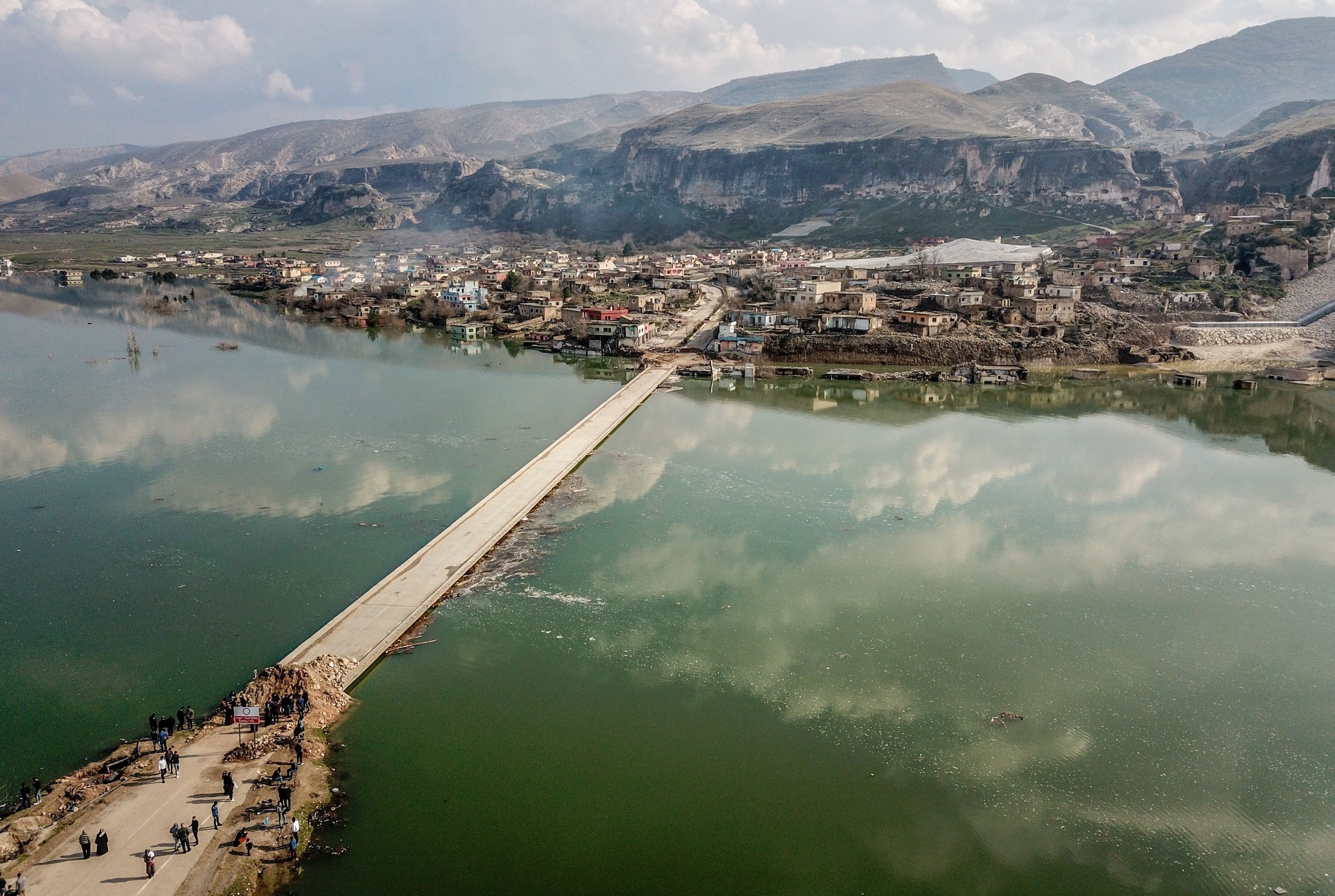
There was something exceptional about Hasankeyf that made visitors fall in love with the town on first sight.
Graced with mosques and shrines, it lay nestled beneath great sandstone cliffs on the banks of the Tigris River. Gardens were filled with figs and pomegranates, and vine-covered teahouses hung over the water.
The golden cliffs, honeycombed with caves, are thought to have been used in Neolithic times. An ancient fortress marked what was once the edge of the Roman Empire. The ruins of a mediaeval bridge recalled when the town was a wealthy trading centre on the Silk Road.
Now it is all lost forever, submerged beneath the rising waters of the Ilisu Dam, the latest of president Recep Tayyip Erdogan’s megaprojects, which flooded 100 miles of the upper Tigris River and its tributaries, including the once-stunning valley.
I visited the area repeatedly with photographer Mauricio Lima for half a year to witness the disappearance of the valley unfold in slow motion. The steadily expanding reservoir displaced more than 70,000 anguished inhabitants. Unexplored archaeological riches were swallowed up along with farms and homes.
The waters have rendered Hasankeyf an irretrievable relic of the bygone civilizations that had been similarly drawn to the beauty of the valley, carved over millenniums by one of the Middle East’s greatest rivers.
When Erdogan turned on the first turbine of the hydroelectric dam, celebrating the project’s completion in May, the president had his eye on more immediate concerns but also on future glories, promising that it would bring peace and prosperity to southeastern Turkey.
“The wind of peace, brotherhood and prosperity that will blow from the Ilisu Dam will be felt in these lands for centuries,” he told the ceremony via video link.
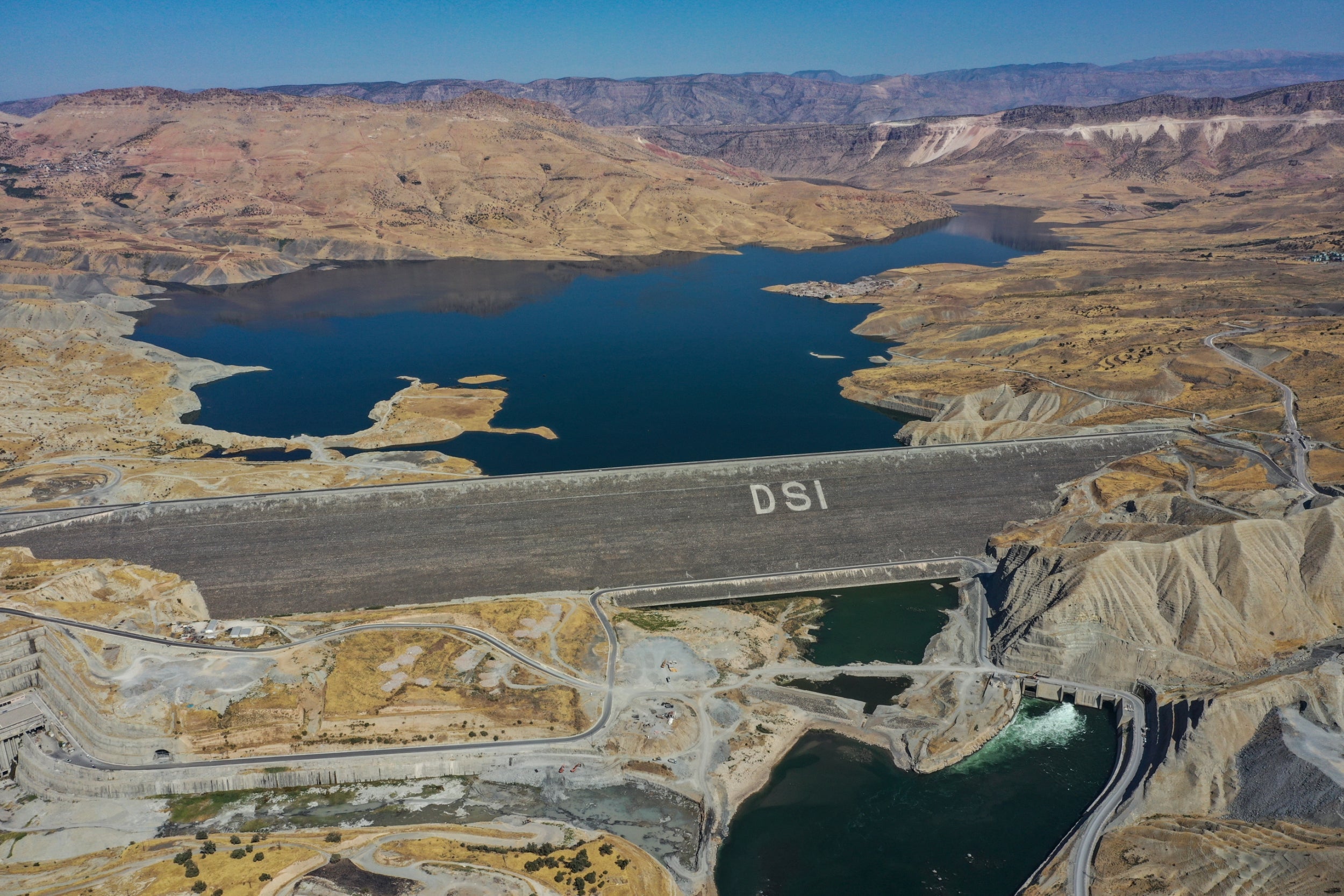
The dam would contribute billions to the economy and irrigate thousands of hectares of farmland, he said.
Government officials have emphasised that hydropower offers their greenest option when they decided to push ahead with the dam a dozen years ago, allowing Turkey to reduce its dependence on imported coal and gas.
But many who lost their homes and livelihoods say they were never really consulted. They are bitter and traumatised. Environmentalists and archaeologists, in Turkey and abroad, are angry and frustrated, too, at the loss of the valley and its treasures.
Their efforts to save Hasankeyf collapsed in the face of Erdogan’s increasing authoritarianism. International law, lagging behind the shifting attitudes around climate change and the value of protecting the environment, was inadequate for safeguarding the cultural heritage, they say.
Zeynep Ahunbay, a conservation architect, campaigned for more than a decade to save Hasankeyf, not only for its archaeological gems but also for the value of its ancient natural setting.
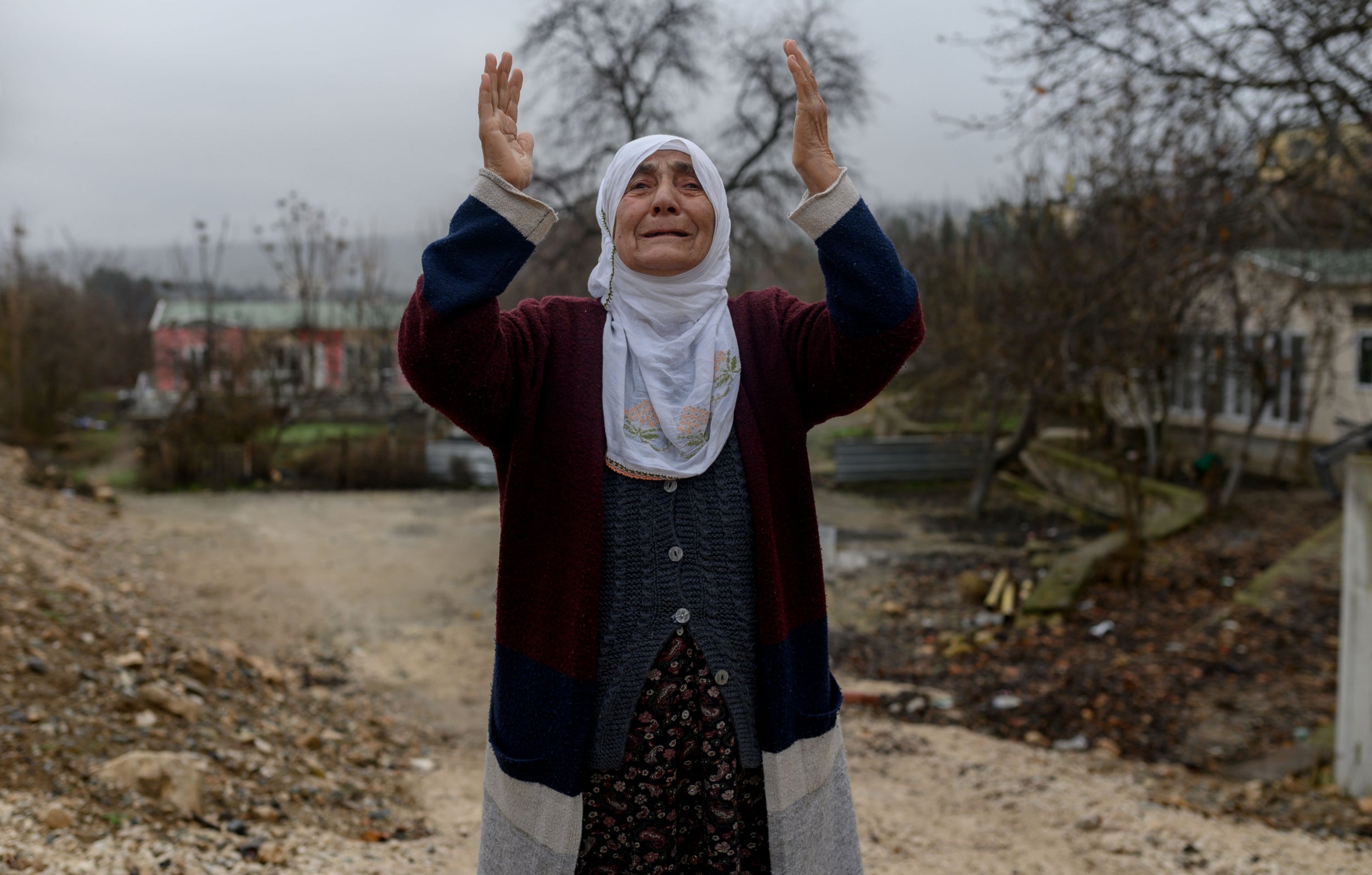
“You see this valley, it is so impressive,” Ahunbay says, describing what it was like to round the hillside and see Hasankeyf come into view. “You see this river cutting the rock and it goes down and down, and in the end you have the citadel of Hasankeyf. It is really marvellous, and nature and man have formed this place.”
“To disturb or change the natural process of the river is also criminal,” she says. “You lose the beauty, you lose history, you lose nature. You are a loser all the time.”
When Erdogan first announced his determination to build the dam, he championed it not only for the energy it would provide Turkey’s expanding economy but also for the development it would bring to the impoverished and insurgency-riven southeast.
The dam is part of the massive Southeastern Anatolia Project irrigation plan that was begun in the 1980s.
They spent a horrendous amount of money, they could have fixed all the problems of the south with that
When the plan was first conceived in the 1950s, there was little thought of its impact on the environment or on those who would be forced to leave. But as Turkey developed democratically, opponents of the dam began organising.
International activist organisations became involved, too, challenging international investors over concerns about the environmental impact, the loss of cultural heritage and the damage to communities downstream in Iraq and Syria.
Ahunbay did not oppose the dam itself but campaigned to preserve Hasankeyf and resisted a plan to move the ancient monuments to higher ground and to entomb one in concrete.
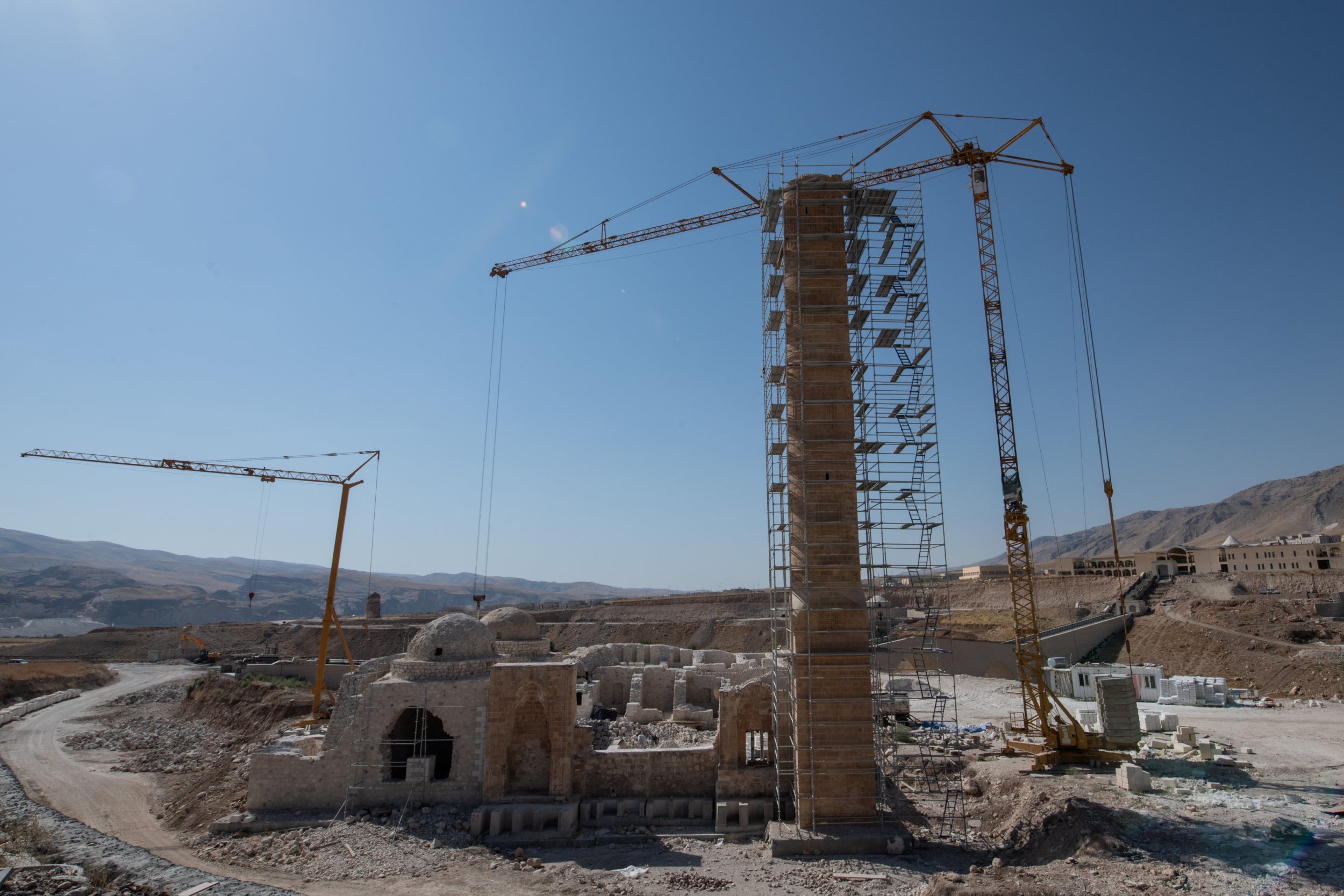
As president of the International Council on Monuments and Sites, an international professional association that works to protect cultural heritage sites, she and a group of colleagues took the case to the European Court of Human Rights. They lost in the end because none of the plaintiffs were residents of Hasankeyf.
The protest campaigns had early success in 2009, pushing several European partners to withdraw financing mainly because Turkey did not meet the requirements of social impact assessments.
But Erdogan was undeterred. He ordered Turkish banks to step in and finance the project instead.
Money seemed no object. The government built two new towns to relocate those displaced, and new highways and bridges to skirt the reservoir. Turkish companies, closely allied to Erdogan’s government, won the building contracts.
The project had become a moneymaking exercise, a local bureaucrat said, asking that he not be identified by name for fear of reprisals from the government.
“They spent a horrendous amount of money,” says Emin Bulut, a local journalist and activist, who says the bill ran to trillions of lira. “They could have fixed all the problems of the south with that.”
In 2012, government officials arrived to begin evaluating property that would be submerged to compensate those who would be displaced. But the money became a source of resentment, dividing the community, and even families, and raising accusations of corruption. The arguments broke apart any unified opposition to the dam.
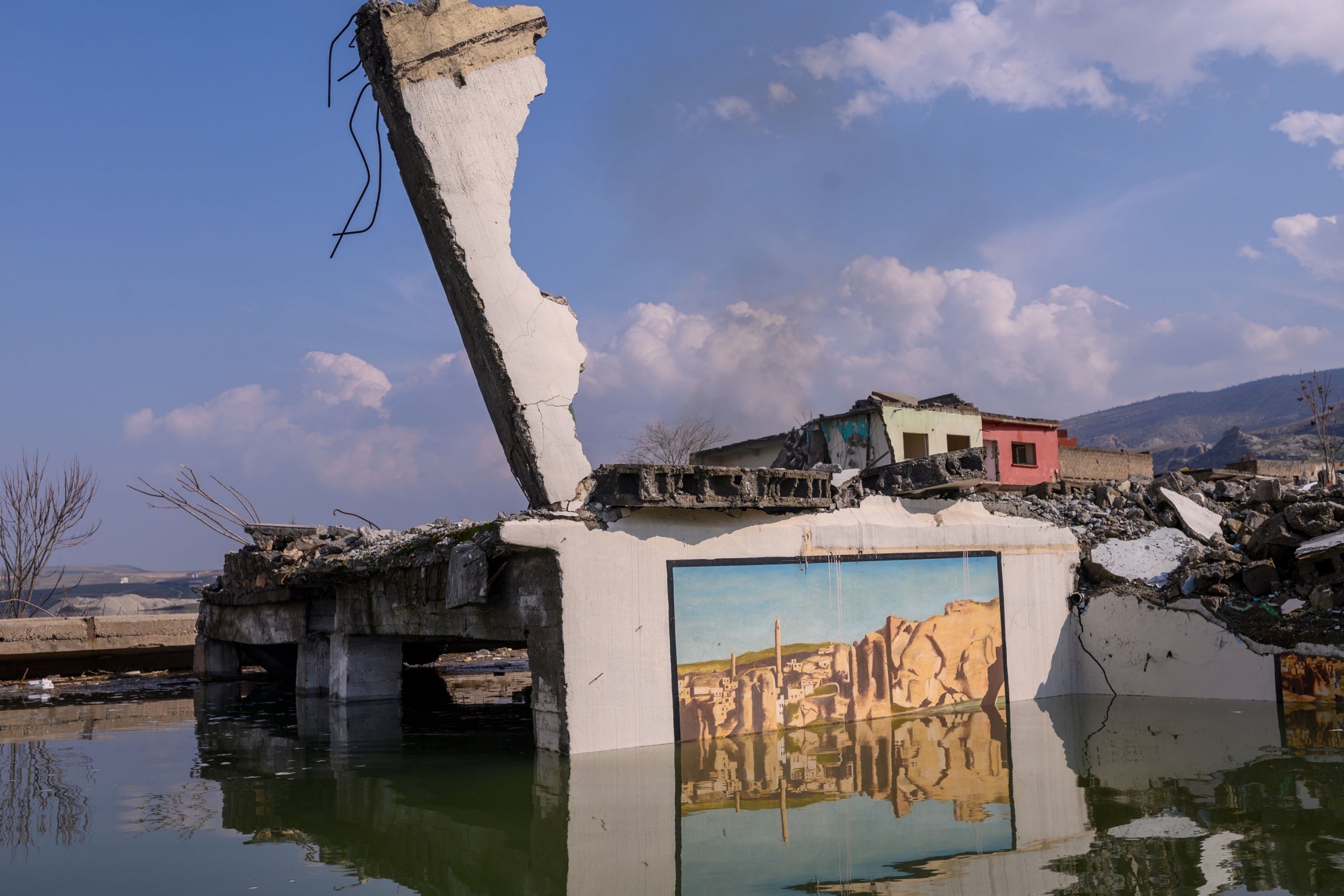
“We surrendered when they came to measure the houses,” says Birsen Argun, 44, who together with her husband ran the Hasbahce Hotel, the only hotel in Hasankeyf, set in a garden of pomegranate and walnut trees along the river. “We brought it upon ourselves.”
Her husband tried to persuade his brothers to refuse the money and fight for a bigger payment in the courts, but they accepted the payout. People withdrew the money from accounts without telling others, she added.
Many of those who did try to organise a protest movement grew up in Hasankeyf and were even born in the cave homes of the citadel, like Arif Ayhan, 44, who started out selling old coins to tourists and then became a rug dealer.
Politics split the campaign, he says, especially when supporters of the outlawed Kurdish movement, the Kurdistan Workers’ Party, joined the rallies against the dam, chanting slogans and enraging police.
“This is why we failed,” he says. “We live in the most beautiful place in the world, but we could not appreciate the value of this place.”
After years of warnings, the end came suddenly. In August, the government closed the dam gates and released waters from a reservoir upriver. Families scrambled to move out of villages, abandoning homesteads, selling off livestock and even hastily building new houses and access roads on higher ground.
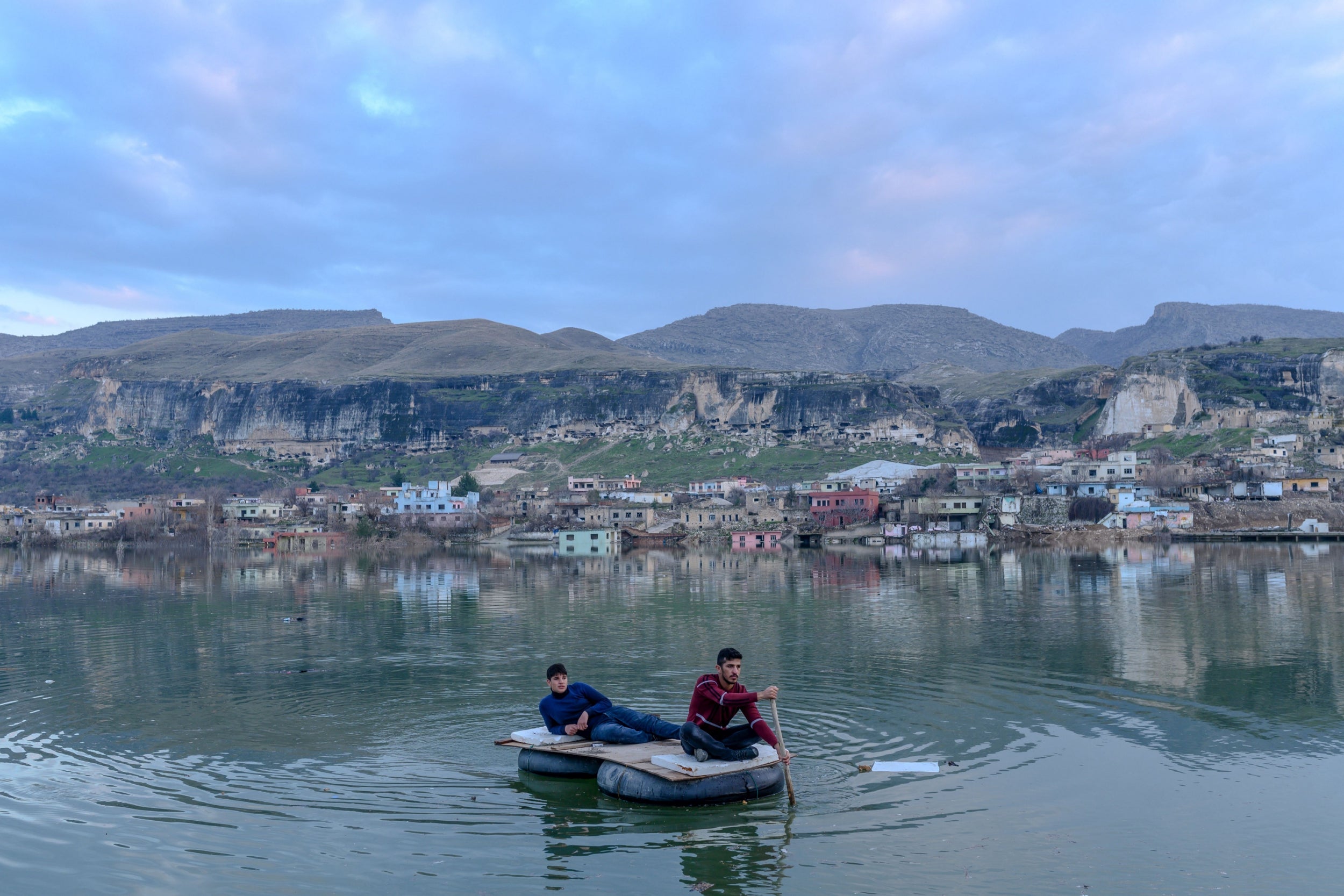
“We hoped the water would not come,” says Remziye Nas, mother of four, in the village of Bzere, where the water was lapping below her house. “We did not believe it would be flooded.”
In the small town of Temelli, perched above the dam, Hezni Aksu, 60, looked down from his terrace to where his family’s farmhouse and lands were among the first to go under water.
“This land was from our ancestors,” he says bitterly. His son is now an unemployed construction worker. “They made migrants of us.”
Fatime Salkan had refused to leave the low-pitched stone house that belonged to her parents, overlooking the 15th-Century El-Rizk mosque. Officials warned her to move
In Hasankeyf, under a heavy police presence, bulldozers demolished the old bazaar one weekend in November. As the ceiling caved in and dust fell inside his shop, something snapped inside Mehmet Ali Aslankilic. With a shout he set fire to his belongings in a lone, anguished protest.
“It was my uncle’s shop. I had been working there since I was a child,” he says. “Burning my shop was the only way I could deal with this.”
A few doors down, Mehmet Nuri Aydin, 42, packs his woven rugs of long sheep’s wool into sacks.
“We don’t want to go but we have to,” he says, adding that few shopkeepers could afford the rents in the new town.
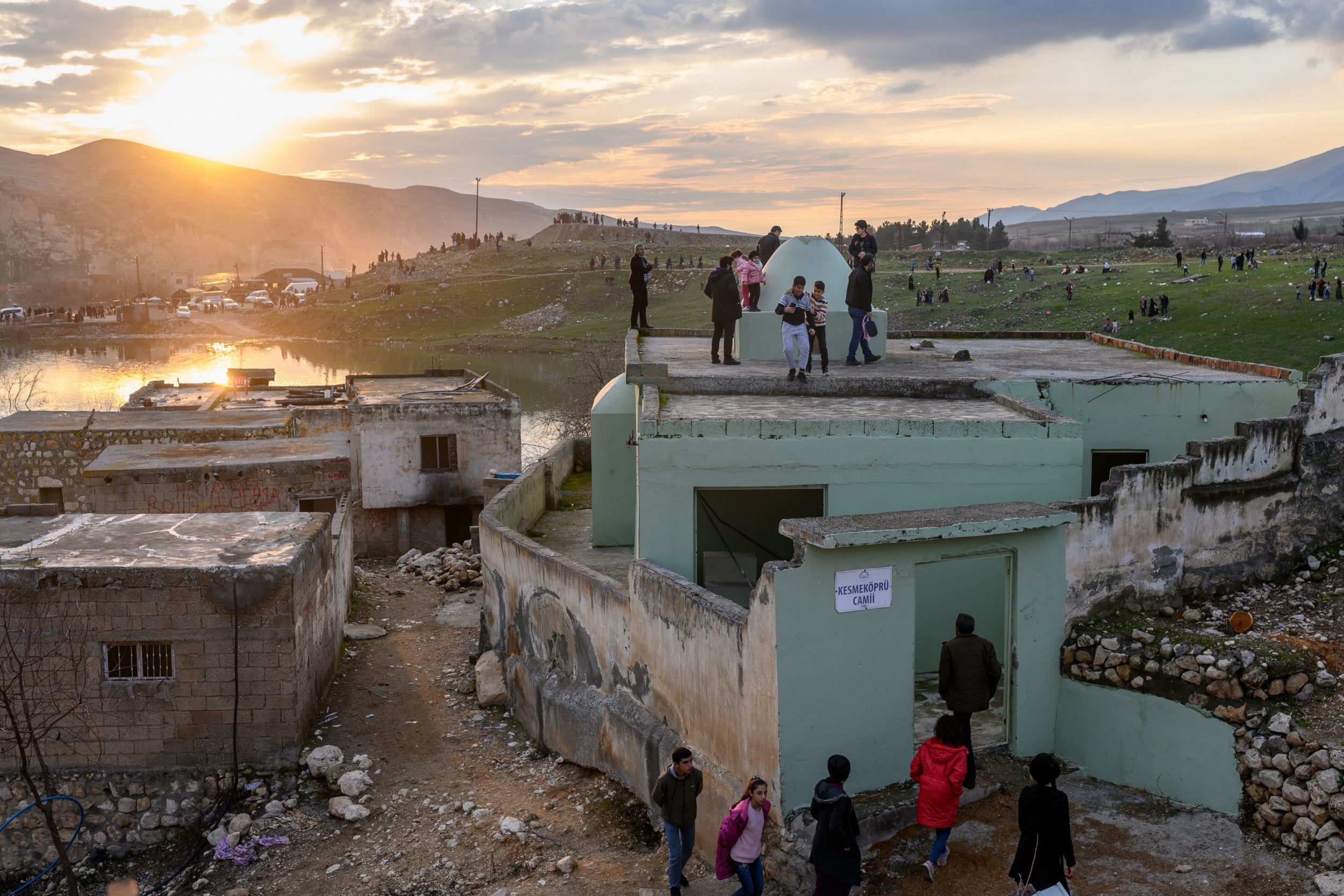
There was no wider demonstration. Since a failed coup in 2016, Turkey has banned all protests, so the campaign to save Hasankeyf had long since petered out. Activists were even careful about what they posted on social media. Government officials kept photographers away.
With the bazaar demolished, families started to load furniture onto trucks and move to specially built homes in the new town. They gathered up the last pomegranates from the trees and piles of firewood, some even wrenching off doors and window frames from their old homes.
“Our hearts are burning,” Celal Ozbey, a retired civil servant, says as his wife and sons carry out tables and bundles from the house.
They had been assigned a house in the new town, but he was not sure they would stay, or if economic life would revive.
“Time will tell,” he says.
Fatime Salkan had refused to leave the low-pitched stone house that belonged to her parents, overlooking the 15th-Century El-Rizk mosque. Officials warned her to move, but she was among several dozen single people who, under a quirk of Turkish law, were not considered eligible for a new home.
“They told me to leave many times,” she told me in November. “If an engineer comes, I will say I am going to swim.”
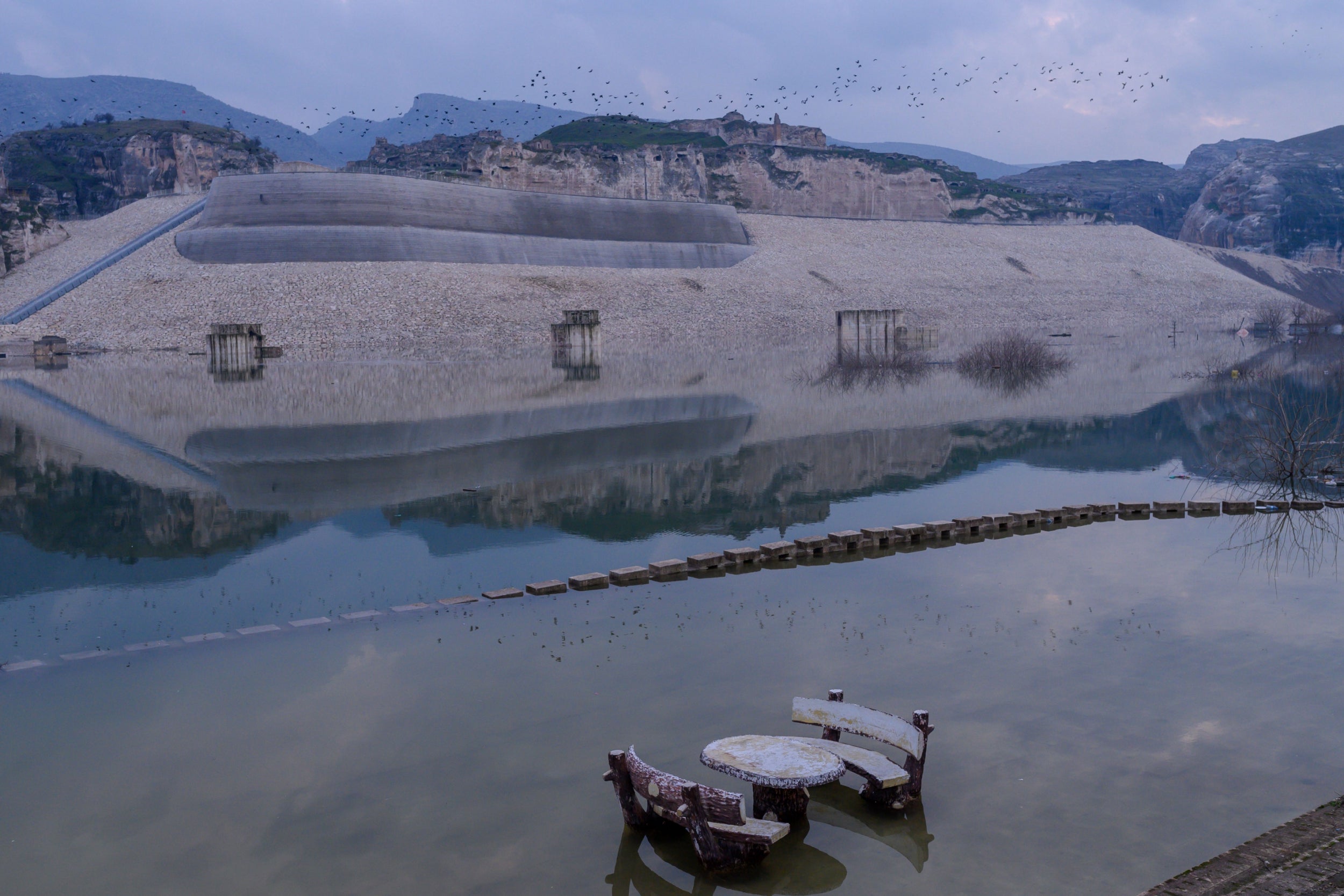
She watched from her terrace in December when Dutch engineers lifted the last of the mediaeval monuments, the 1,700-ton El-Rizk mosque with its intricately carved portal, onto wheels and transported it across the river.
They deposited it on a man-made hill beside the new town, where the government has assembled various salvaged monuments and built a modern replica of the mediaeval bridge. They look out of place on the bare hillside, which will be made into a new archaeological park.
Archaeologists insist that monuments ideally should be preserved in their place but concede that if there is no other option, it is better to save them somehow. For the purists, though, the new Hasankeyf is artificial and charmless.
“The real history is down there, and we are drowning it,” says Zulku Emer, 41, a master craftsman who was laying a cobbled street beside the new park. “That’s the Turkish way. We ruin something and then try and live in it.”
© The New York Times
Join our commenting forum
Join thought-provoking conversations, follow other Independent readers and see their replies
Comments
Bookmark popover
Removed from bookmarks